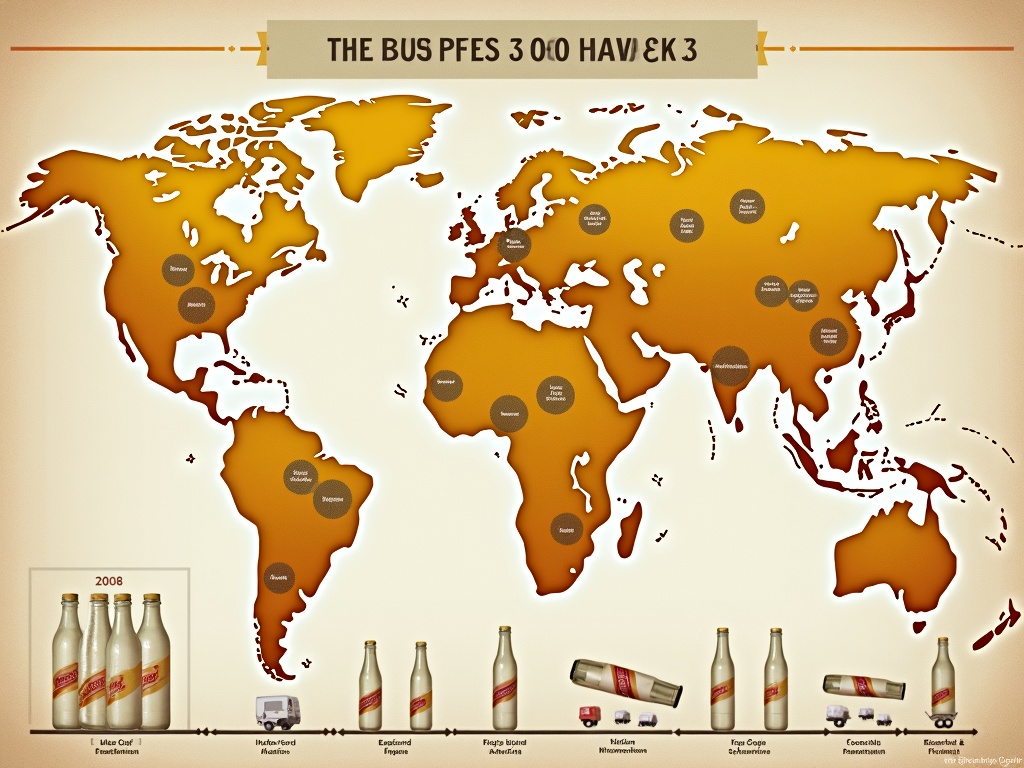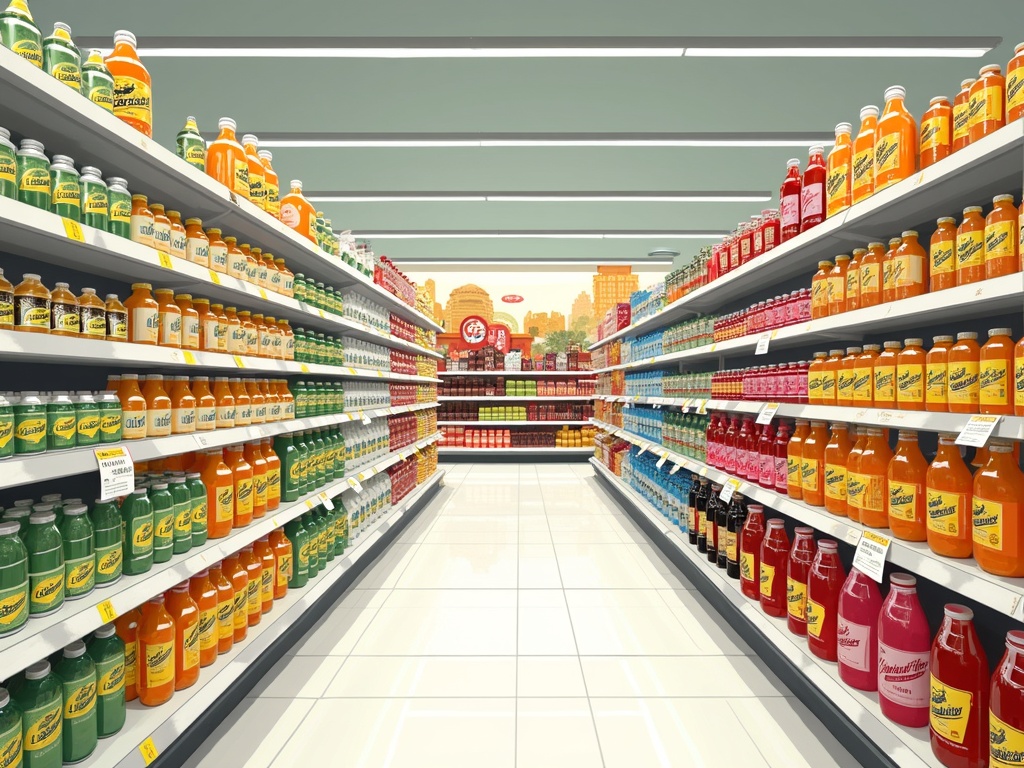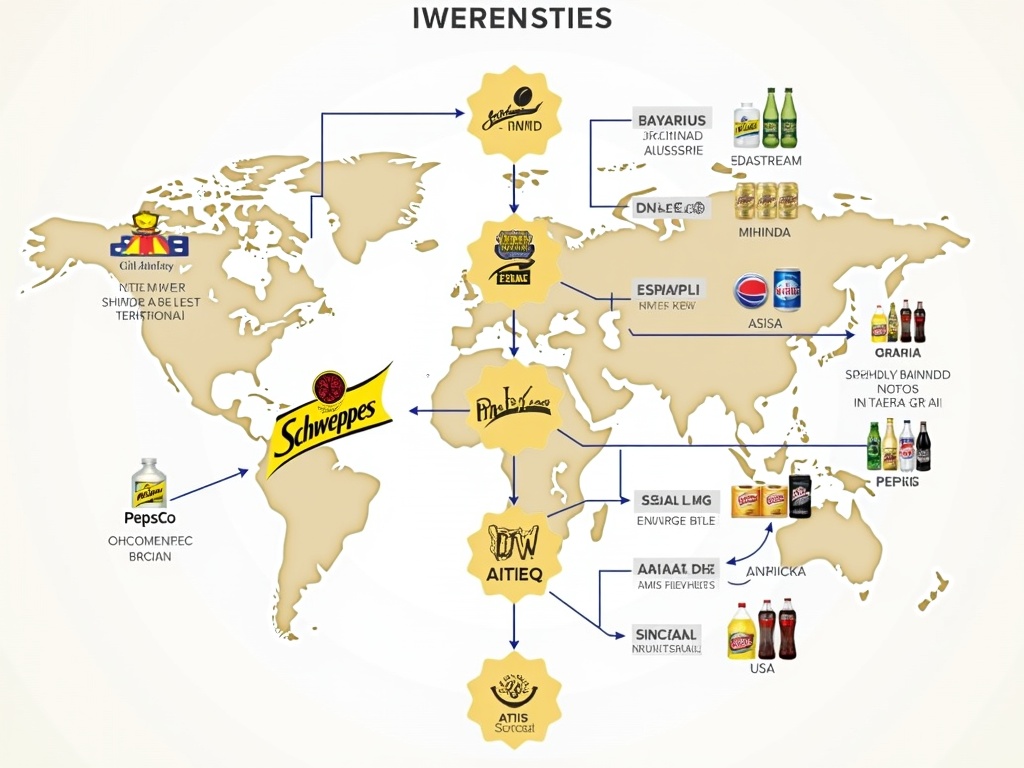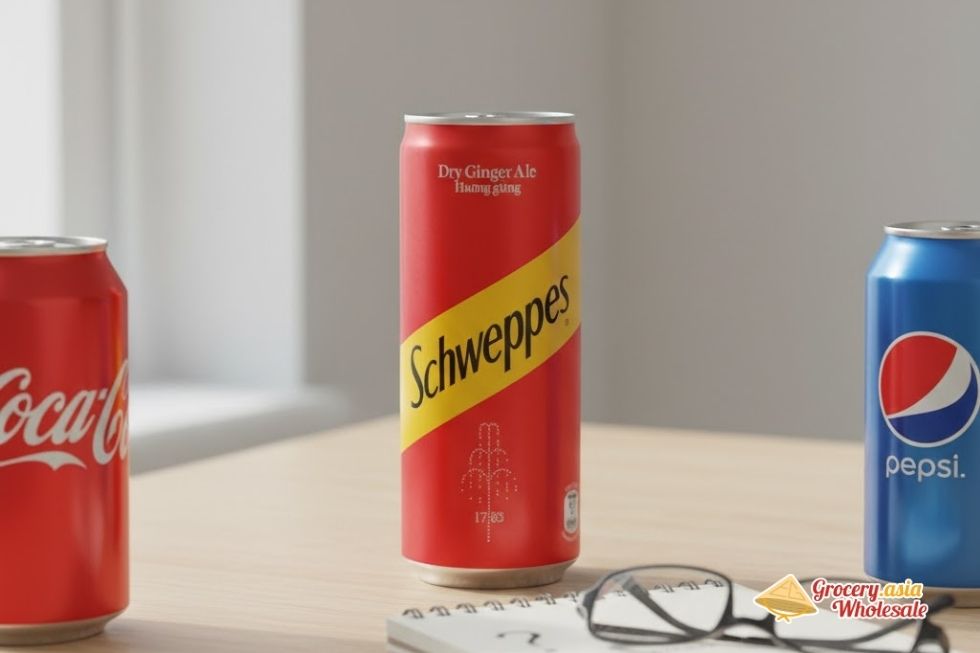No products in the cart.
Beverages News, Schweppes, Soft Drinks
Is Schweppes A Pepsi Product Or Coca Cola Owned
Schweppes operates under a unique and intricate pattern of regional ownership that reflects a long history of corporate mergers and licensing deals, resulting in varied control depending on geographical markets. Contrary to popular belief, PepsiCo holds no ownership stake in Schweppes anywhere in the world.
Table of Contents
Ownership Structure of Schweppes
Who Owns Schweppes Around the World?
The Schweppes brand is managed by three different beverage giants depending on the region. These divisions are the result of decades of corporate evolution, allowing localized management of the brand.
- Keurig Dr Pepper controls the distribution of Schweppes in North America, specifically in the United States and Canada, following the split of Cadbury Schweppes in 2008.
- The Coca-Cola Company holds the rights to the brand throughout most of Europe and parts of Africa. This follows their acquisition of the brand in 1999, helping Coca-Cola strengthen its presence in the drinks mixer and sparkling water markets.
- Asahi Group Holdings owns and operates Schweppes in Japan and select Asian markets, expanding their portfolio of non-alcoholic beverages in the region.
PepsiCo’s Absence
Despite common assumptions, PepsiCo does not own Schweppes anywhere globally. This is a frequent misconception among consumers due to the brand’s wide availability, but the companies remain entirely separate in this regard.
Key Takeaways
- PepsiCo does not own Schweppes in any country globally, despite common consumer misconceptions about their relationship.
- Keurig Dr Pepper controls Schweppes distribution across the United States and Canada following the 2008 Cadbury Schweppes demerger.
- The Coca-Cola Company holds Schweppes rights throughout most of Europe and parts of Africa after acquiring the brand in 1999.
- Regional ownership allows for market-specific adaptations while maintaining the brand’s core identity and premium positioning.
- The fragmented ownership structure stems from strategic business decisions including mergers, acquisitions, and licensing agreements that divided the historic brand geographically.
For more details on Schweppes and its history, you can explore the official Schweppes website.
The Truth About Schweppes: Who Really Owns This Iconic Brand
I’ve discovered that Schweppes ownership presents one of the beverage industry’s most complex puzzles. PepsiCo doesn’t own or distribute Schweppes anywhere in the world. This sparkling water brand operates under a fascinating web of regional ownership that splits control among three major beverage corporations.
Geographic Division of Schweppes Rights
The brand’s ownership structure divides along geographical lines, creating distinct markets for different companies:
- Keurig Dr Pepper controls Schweppes distribution across the United States and Canada
- The Coca-Cola Company holds rights throughout most of Europe and parts of Africa
- Asahi Group Holdings (formerly Suntory) manages operations in Japan and select Asian markets
- Various regional partners handle distribution in remaining territories
This fragmented approach means I can buy Schweppes from completely different companies depending on my location. The tonic water’s legacy spans continents, but its corporate structure reflects decades of strategic business decisions.
Historical Context Behind the Split
The current ownership arrangement stems from the 2008 Cadbury Schweppes demerger. This pivotal moment separated confectionery operations from beverage assets, creating opportunities for multiple companies to acquire regional rights. Subsequent mergers, acquisitions, and licensing agreements further complicated the ownership landscape.
Each regional owner maintains the brand’s heritage while adapting distribution strategies for their specific markets. Keurig Dr Pepper leverages its strong North American network, while Coca-Cola uses its extensive European infrastructure. These partnerships ensure consumers worldwide can access authentic Schweppes products despite the divided ownership structure.
The absence of PepsiCo from this equation highlights how beverage giants strategically focus on different brand portfolios. While PepsiCo concentrates on cola, sports drinks, and snacks, other companies recognized Schweppes’ value in premium mixer and sparkling water categories. This strategic positioning explains why you’ll never find Schweppes alongside Pepsi products in corporate announcements or integrated marketing campaigns.
Understanding this ownership structure helps explain pricing variations, flavor availability, and marketing approaches across different regions. Each controlling company brings distinct expertise and market knowledge, ensuring Schweppes maintains its position as a premium sparkling beverage brand regardless of who bottles it locally.

Schweppes in America: Under the Keurig Dr Pepper Umbrella
I want to clarify something important for American consumers: Schweppes isn’t actually a PepsiCo product in North America. Instead, Keurig Dr Pepper (KDP) owns and manufactures all Schweppes products sold in the United States and Canada.
This ownership arrangement stems from a significant corporate restructuring that happened in 2008. The original Cadbury Schweppes company underwent a demerger that year, effectively splitting their confectionery operations from their beverage business. This separation marked a turning point for the Schweppes’ brand story in North America.
Following the split, the American beverage division became known as the Dr Pepper Snapple Group. Fast-forward to 2018, and another major merger took place when this company joined forces with Keurig Green Mountain, creating what we now know as Keurig Dr Pepper.
Schweppes’ Position Within KDP’s Portfolio
Today, Schweppes stands as one of KDP’s flagship brands, sharing the spotlight with other household names you’ll recognize:
- Canada Dry – another ginger ale favorite
- Dr Pepper – the distinctive “23 flavors” cola
- 7UP – the clear lemon-lime soda
- A1 – the classic steak sauce
- Snapple – fruit drinks and teas
Schweppes maintains a strong presence in American retail with several popular varieties. Schweppes Tonic Water remains a bar staple for cocktail enthusiasts, while their Ginger Ale competes directly with Canada Dry in the same portfolio. Club Soda serves the mixology market, and newer additions like Black Cherry Sparkling Seltzer and Raspberry Lime cater to the growing flavored sparkling water trend.
Understanding Schweppes ownership helps explain why you might see different product availability between regions. KDP focuses on maintaining Schweppes’ premium positioning while leveraging their extensive distribution network across North American retailers. This arrangement allows the brand to compete effectively against both PepsiCo and Coca-Cola’s sparkling beverage offerings while maintaining its distinctive British heritage and quality standards.

Yes, Schweppes Is a Coca-Cola Brand—But Only in Certain Countries
I can confirm that Schweppes operates as a Coca-Cola brand across most of the world, though this relationship doesn’t extend to every market globally. The story begins in 1999 when The Coca-Cola Company acquired Schweppes Beverages Limited from Cadbury Schweppes, securing bottling and distribution rights in over 155 countries outside North America.
This acquisition transformed Schweppes into a global Coca-Cola property across Europe, Africa, and significant portions of Asia. Coca-Cola Europacific Partners (CCEP) now manages the production and distribution operations throughout key regions including the UK, Ireland, France, Spain, Nigeria, and numerous other territories.
Schweppes Under Coca-Cola’s Management
Coca-Cola positions Schweppes as a premium mixer and soft drink brand in these markets. The company leverages its extensive distribution network to ensure Schweppes tonic water and other variants reach consumers efficiently across diverse geographical regions.
Product innovation remains a priority under Coca-Cola’s stewardship. The company continues developing new flavors and modernizing packaging designs to strengthen Schweppes’ position in the mixer category. Popular products include:
- Schweppes Lemonade
- Indian Tonic
- Bitter Lemon
Each maintains the brand’s reputation for quality carbonation and distinctive taste profiles.
Strategic Market Positioning
Coca-Cola‘s approach emphasizes Schweppes’ heritage while adapting to contemporary consumer preferences. The company invests in marketing campaigns that highlight the brand’s sophisticated positioning, particularly targeting consumers who appreciate premium mixers for cocktails and standalone consumption.
This ownership structure creates an interesting dynamic where Schweppes’ legacy continues under different corporate umbrellas depending on geography. Coca-Cola’s management has maintained the brand’s core identity while implementing operational efficiencies through its established supply chains and distribution partnerships.
The success of this arrangement demonstrates how major beverage companies can preserve brand authenticity while achieving scale economies. Coca-Cola’s investment in Schweppes reflects the growing importance of premium mixer categories and the company’s commitment to diversifying beyond traditional cola products.
Why Schweppes Has Nothing to Do with PepsiCo
I can clear up this common misconception immediately: PepsiCo does not own Schweppes in any country around the globe. This confusion stems from several overlapping factors in the beverage industry that make these brands appear connected when they’re actually completely separate entities.
Common Sources of Consumer Confusion
The mix-up between Schweppes and Pepsi happens for several understandable reasons:
- Both brands compete in similar beverage categories, with PepsiCo offering products like SodaStream mixers and Mirinda citrus sodas
- Schweppes and Pepsi products frequently share retail shelf space in stores and restaurants
- Canada Dry, which is owned by Keurig Dr Pepper, holds licensing agreements with Pepsi in select international markets
- Both companies produce carbonated beverages that appeal to similar consumer demographics
The Reality of Schweppes Ownership
Schweppes ownership varies by region but has zero connection to PepsiCo anywhere in the world. Dr Pepper Snapple Group controls Schweppes in the United States, while Coca-Cola holds the rights in many other territories. Asahi Group owns the brand in Australia, and various other companies manage regional rights elsewhere.
PepsiCo focuses its mixer and tonic water efforts through different brands entirely. Their SodaStream acquisition allows them to compete in the home carbonation space, while regional partnerships with other beverage companies fill gaps in their portfolio. However, none of these arrangements involve Schweppes products or licensing.
The Canada Dry licensing situation adds another layer of complexity. While KDP owns this ginger ale brand, Pepsi distributes it in certain international markets through licensing agreements. This arrangement might lead some consumers to assume similar deals exist with other mixer brands like Schweppes, but that’s simply not the case.
I’ve noticed that retail placement often reinforces this confusion. Schweppes tonic water and ginger ale products sit alongside Pepsi sodas in convenience stores and supermarkets. This proximity creates an unconscious association between the brands, especially when consumers see them together consistently.
Schweppes operates as an independent entity within its respective ownership structures. The brand maintains its own production facilities, marketing strategies, and distribution networks. PepsiCo’s beverage empire, while vast and varied, simply doesn’t include this historic mixer and tonic water brand in any capacity.

From Switzerland to Global Phenomenon: The Schweppes Timeline
I trace Schweppes’ remarkable journey back to 1783, when German-Swiss watchmaker and chemist Jacob Schweppe established his groundbreaking venture in Geneva, Switzerland. Building upon Joseph Priestley’s scientific discoveries about carbonation, Schweppe pioneered the commercial production of carbonated mineral water, creating what would become one of the world’s most recognizable beverage brands.
The company’s expansion across Europe established Schweppes as the gold standard for quality mixers and sparkling beverages. This European success laid the foundation for global recognition, with Schweppes tonic water becoming particularly celebrated for its distinctive taste and premium positioning.
A significant chapter in Schweppes’ corporate evolution began in 1969 when the company merged with Cadbury to form Cadbury Schweppes plc. This partnership combined confectionery expertise with beverage innovation under one corporate umbrella, creating a formidable presence in both sectors. For nearly four decades, this arrangement allowed Schweppes to leverage Cadbury’s distribution networks and marketing strength while maintaining its beverage identity.
The 2008 corporate restructuring marked another pivotal moment in Schweppes ownership. The demerger split Cadbury Schweppes into two focused entities: Cadbury retained the chocolate and confectionery operations (later acquired by Mondelez International), while the Dr Pepper Snapple Group took control of North American beverage operations. Dr Pepper Snapple Group has since become part of Keurig Dr Pepper, continuing to oversee Schweppes products in the North American market.
Regional Ownership and Innovation
Australia presents a particularly interesting case study in Schweppes’ global structure. In 2009, Asahi Beverages, part of the Suntory Group, acquired Schweppes Australia, creating a distinct regional operation. Operating under Asahi Lifestyle Beverages, this Australian division has developed unique local offerings that reflect regional taste preferences:
- Agrum Citrus Blend captures the distinctive Australian citrus profile
- Lemon Lime & Bitters appeals to local palate preferences
- Peach Soda offers a sweet, fruity alternative to traditional mixers
These regional innovations demonstrate how Schweppes adapts to local markets while maintaining its core brand identity. The Australian operation showcases the flexibility that comes with regional ownership structures, allowing for product development that resonates specifically with local consumers.
This complex ownership structure explains why Schweppes products may taste slightly different or offer unique flavors depending on your location, reflecting both local ownership decisions and regional manufacturing processes.
Sources:
Keurig Dr Pepper – Corporate History & Brand Portfolio
The Coca-Cola Company – The Story of Schweppes Acquisition (1999)
Asahi Beverages – About Schweppes Australia
Reuters – Cadbury Schweppes Demerger Announcement (2008)
The New York Times – Cadbury Schweppes Splits Confectionery and Beverage Units


